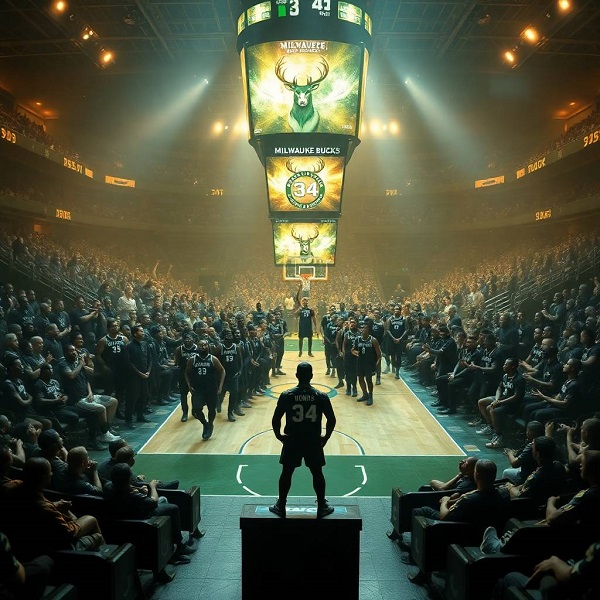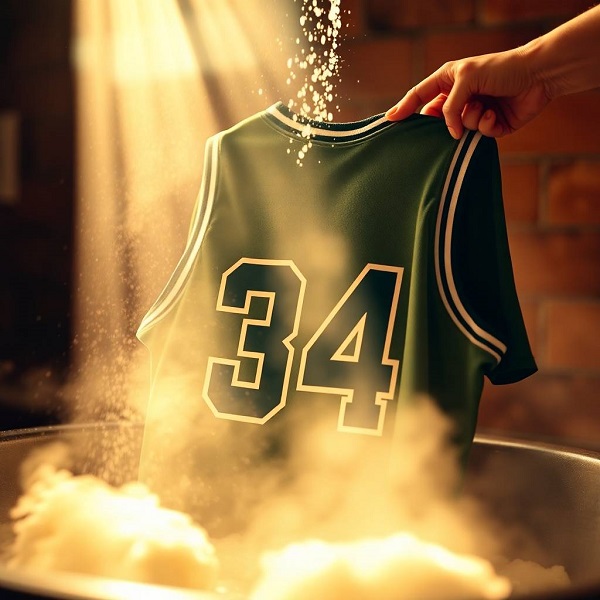The narrative that Giannis Antetokounmpo, the Milwaukee Bucks’ two-time MVP and NBA champion, “needs help” has been a persistent talking point among fans, analysts, and media. Every playoff disappointment or regular-season struggle prompts calls for the Bucks to acquire another superstar or bolster their roster to support their franchise player. However, this perspective oversimplifies the Bucks’ challenges and ignores a critical truth: Giannis himself is often a significant factor in the team’s shortcomings. While his dominance is undeniable, his playstyle, decision-making, and limitations contribute to Milwaukee’s struggles more than the lack of “help” around him.
The Myth of Insufficient Support
The argument that Giannis lacks adequate support often stems from the Bucks’ playoff exits, such as their first-round loss to the Miami Heat in 2023 or their 2024 defeat to the Indiana Pacers. Critics point to the roster, claiming it fails to complement Giannis’s skill set. However, this overlooks the quality of players Milwaukee has assembled. Khris Middleton, a three-time All-Star, has been a reliable second option, averaging 20.1 points per game in the 2022-23 season with a knack for clutch shot-making. Jrue Holiday, before his trade to Boston, was a Defensive Player of the Year candidate and a steady playmaker. Damian Lillard, acquired in 2023, is one of the league’s premier offensive engines, averaging 24.3 points and 7.0 assists in his first season with Milwaukee. Brook Lopez, a Defensive Player of the Year finalist, anchors the paint, while players like Bobby Portis and Pat Connaughton provide depth.
This is not a barren roster. The Bucks’ supporting cast has consistently ranked among the league’s better ensembles, with Milwaukee finishing the 2022-23 season with the NBA’s best record (58-24). Blaming the roster ignores the fact that teams like the 2023 Heat or 2024 Pacers, who ousted Milwaukee, were not necessarily more talented but executed better. The issue isn’t a lack of talent around Giannis—it’s how his playstyle interacts with that talent.
Giannis’s Playstyle: A Double-Edged Sword
Giannis is a force of nature, a 6’11” freight train who combines athleticism, length, and defensive versatility in the past. His ability to drive to the rim, collapse defences, and finish through contact is impressive, evidenced by his career average of 22.9 points per game on 54.7% shooting (as of the 2024-25 season). However, his approach, while devastating, creates challenges that hinder the Bucks in critical moments. When it counts, Giannis comes up short.
Over-Reliance on Drives
Giannis’s game revolves around attacking the basket, often bulldozing through defenders to score or draw fouls. He led the NBA in free-throw attempts per game (11.0) in the 2022-23 season, a testament to his rim pressure. But this one-dimensional approach allows opponents to game-plan effectively. Teams like the Heat and Raptors (in 2019) have employed the “Giannis Wall,” packing the paint with multiple defenders to neutralize his drives. Without a consistent outside shot—his three-point percentage hovers around 27.7% for his career—Giannis struggles when teams dare him to shoot.
This predictability forces the Bucks into stagnant offensive sets. When Giannis barrels into a crowded paint, it often results in turnovers (3.1 per game career average) or low-percentage shots. His insistence on driving, even against set defenses, disrupts Milwaukee’s flow, limiting opportunities for shooters like Lillard or Middleton to exploit open looks. Compare this to players like Nikola Jokić, who blends scoring with elite playmaking (9.0 assists per game in 2023-24), or Kevin Durant, whose mid-range and three-point shooting keep defenses honest. Giannis’s tunnel vision on drives can stifle his team’s offense, making it easier for opponents to dictate the game’s pace.
Free-Throw Struggles and Pace Issues
Giannis’s free-throw shooting, while improved, remains a liability at 65.8% for his career. In high-stakes playoff games, this weakness is magnified. Opponents often employ Hack-a-Giannis strategies, slowing the game and disrupting Milwaukee’s rhythm. His lengthy free-throw routine—often exceeding the 10-second limit—further bogs down the pace, frustrating teammates and fans alike. In the 2023 playoffs, Giannis shot 45.3% from the line against Miami, a glaring issue in tight games.
This slow pace clashes with the modern NBA’s emphasis on speed and spacing. The Bucks ranked 19th in pace (98.5 possessions per game) in 2023-24, limiting their ability to capitalize on transition opportunities where Giannis thrives. His dominance in the half-court often comes at the expense of fluid team play, as teammates stand idle while he attempts to overpower defenders. Giannis simply can’t change the way he plays resulting in the entire team suffering.
Decision-Making in Crunch Time
Giannis’s decision-making in clutch situations is another area where he contributes to Milwaukee’s struggles. His choices in critical moments often falter. In the 2021 championship run, Giannis was phenomenal, but Middleton and Holiday frequently bailed him out in clutch scenarios. Fast forward to 2024, and his 4.4 turnovers per game in the playoffs against Indiana highlighted a recurring issue: forcing plays under pressure. Giannis simply can’t think fast enough when it counts, “he has no bag” for the top level of the NBA.
For example, in Game 5 of the 2023 Heat series, Giannis attempted a game-tying drive with seconds remaining, only to be stripped in traffic, leading to a turnover. A better decision—passing to an open Middleton or Lopez—might have changed the outcome. His reluctance to defer, even when double- or triple-teamed, puts undue pressure on his teammates to compensate for his mistakes. Contrast this with LeBron James, who, despite similar defensive attention, averages 7.4 assists per game by finding open teammates. Giannis’s assist average (5.7 in 2023-24) is solid but doesn’t reflect the same level of trust in his supporting cast.
The Coaching Carousel and Giannis’s Influence
The Bucks’ coaching instability—Mike Budenholzer’s firing in 2023, Adrian Griffin’s midseason dismissal in 2024, and Doc Rivers’ uneven tenure—points to another issue tied to Giannis. Reports suggest Giannis has significant influence over team decisions, from roster moves to coaching hires. The trade for Lillard, while a coup, was reportedly driven by Giannis’s desire for a co-star, yet the fit has been clunky. Lillard’s ball-dominant style clashes with Giannis’s need for touches, leading to a disjointed offense (Milwaukee’s offensive rating dropped from 113.3 in 2022-23 to 112.4 in 2023-24).
Giannis’s reported push for Griffin’s hiring, followed by his quick dismissal, suggests a lack of clarity in his vision for the team. This meddling, while not uncommon for superstars, disrupts continuity. The Bucks’ roster and system are built around Giannis’s strengths, but his influence often prioritizes his comfort over team synergy. For instance, the Bucks’ heavy reliance on drop-coverage defense, tailored to Giannis’s rim protection, limits their ability to switch and adapt against versatile offenses like Miami’s or Boston’s.
Statistical Context: Giannis’s Impact vs. Efficiency
To quantify Giannis’s role in Milwaukee’s struggles, consider his advanced metrics. His usage rate (31.2% in 2023-24) is among the league’s highest, reflecting his ball-dominant style. However, his true shooting percentage (61.3%) lags behind players like Jokić (63.1%) or Anthony Davis (62.4%), who balance efficiency with playmaking. Giannis’s high usage often comes at the expense of teammates’ involvement, as evidenced by Middleton’s shot attempts dropping from 15.1 per game in 2022-23 to 13.0 in 2023-24 despite similar minutes.
Defensively his tendency to roam for highlight plays can leave the Bucks vulnerable, especially against pick-and-roll-heavy teams. In the 2024 playoffs, Indiana’s Tyrese Haliburton exploited Milwaukee’s drop coverage, averaging 8.7 assists per game. Giannis’s defensive discipline still wanes in crucial moments, contributing to breakdowns.
The Counterargument: Does Giannis Really Need Help?
Defenders of the “Giannis needs help” narrative argue that no superstar can win alone. They point to Milwaukee’s injury issues—Middleton’s ankle problems in 2023, Giannis’s own calf injury in 2024—as evidence that the roster fails him in key moments. They also note that Lillard’s defensive limitations and Middleton’s inconsistency place too much burden on Giannis.
While injuries are a factor, they don’t fully excuse the Bucks’ failures. Teams like the 2023 Nuggets and 2024 Celtics overcame injuries through system cohesion and star adaptability. Giannis, by contrast, often sticks to his strengths rather than adjusting to opponents’ schemes. His refusal to develop a reliable jumper or refine his play making limits Milwaukee’s ceiling, regardless of who’s on the roster.
Giannis Must Evolve and fans need to stop making up excuses for him
The “Giannis needs help” narrative is a convenient scapegoat that shifts focus from the real issue: Giannis’s own limitations are a significant driver of Milwaukee’s problems. His predictable play style, clutch-time struggles, and influence over team decisions create challenges that no amount of roster tinkering can fully resolve. While he’s a generational talent, Giannis must evolve—whether by developing a jumper, improving his free-throw shooting, or trusting his teammates more in crunch time—to maximize the Bucks’ potential.
The Bucks don’t need another superstar; they need Giannis to address the gaps in his game and adapt to modern NBA demands. Until then, the narrative that he “needs help” will persist, but it’s a distraction from the truth: Giannis is both the Bucks’ greatest asset and, at times, their biggest obstacle.
Stats and data referenced are accurate as of the 2024-25 NBA season and sourced from Basketball-Reference and NBA.com.

